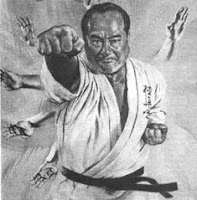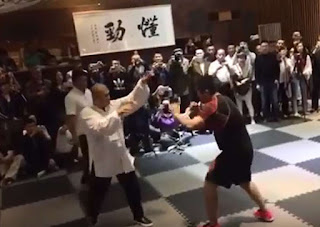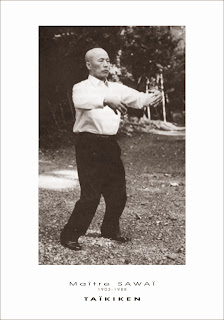Karate and the Chinese martial arts: Part 2
Continued from Part 1 of this article.

I doubt there is any information that will shed further light on the extent Chinese forms were adopted by Okinawan karate. To some extent, all we can do is conjecture.
Having said that, we can arrive somewhere by logical deduction.
It is interesting to note, for example, that Seisho Aragaki taught a form of sanchin, yet he did not study with Ryu Ryu Ko or with Shu Shi Wa. His kata (eg. Sochin and Niseishi) also have a lot of similarity to the kata of Kanryo Higaonna.
 It is also odd that many karateka from Okinawa went to China and came back with a very similar art form - Norisato Nakaima, Kanryo Higaonna, Kanbun Uechi etc - regardless of when these visits were made (some were decades apart). The kata passed down by these men all have an identifiable stamp as being a common (or at least related) artform. This is odd, considering the changes that were taking place on the mainland between those visits (Boxer rebellion, natural evolution of art forms etc.).
It is also odd that many karateka from Okinawa went to China and came back with a very similar art form - Norisato Nakaima, Kanryo Higaonna, Kanbun Uechi etc - regardless of when these visits were made (some were decades apart). The kata passed down by these men all have an identifiable stamp as being a common (or at least related) artform. This is odd, considering the changes that were taking place on the mainland between those visits (Boxer rebellion, natural evolution of art forms etc.).The fact that the Okinawan community had a large expatriate base in Fujian may account for some of this (ie. it is known that Okinawans in Fujian continued to train in Okinawan karate while there - eg. Kojo family).
However it is also clear that many did study with Chinese teachers. The similarity between ryuei ryu and goju (despite the former being kept secret until the early 70s) tells us something. The fact that, say, seiyunchin is common to both systems might indicate a likelihood that it is a Ryu Ryu Ko kata, passed from Kanryo Higaonna to Miyagi - as is claimed in Morio Higaonna's book - and not a Miyagi innovation or something he learned on his own visits to China. There is even a startling similarity in the kata that are not common - eg. Anan clearly shares techniques with saifa and shisochin. This might also support the history in Morio Higaonna's book. On the other hand it might reveal no more than this: despite their studies in China, the Okinawans were reluctant to teach a “pure” Chinese form.
In the end I think that while Okinawans were taught certain kata in China, they either borrowed only elements or modified them to fit into their own systems. This is perhaps because they saw their own methods as being at least of equal worth to the Chinese. In other words, it seems likely to me that they were *adding* to their native Okinawa te - not replacing it.
 Even if the sequence of a particular kata is quite faithful to the Chinese kata they were taught, the feel and method of movement has been altered. Try teaching a goju kata to a shotokan practitioner and you'll see what I mean - they convert it into their own framework unconsciously. Whenever I have learned a Chinese form I have been criticised for making it look too much like karate. On the other hand some kung fu students who have trained in our school still look like they are doing their own art when doing our kata - eg. their zenkutsu dachi looks the same, but not. Over time (and generations) the movements will further morph back into the practitioner's culture and look very little like the original. The technique will remain, but will be executed with a different style.
Even if the sequence of a particular kata is quite faithful to the Chinese kata they were taught, the feel and method of movement has been altered. Try teaching a goju kata to a shotokan practitioner and you'll see what I mean - they convert it into their own framework unconsciously. Whenever I have learned a Chinese form I have been criticised for making it look too much like karate. On the other hand some kung fu students who have trained in our school still look like they are doing their own art when doing our kata - eg. their zenkutsu dachi looks the same, but not. Over time (and generations) the movements will further morph back into the practitioner's culture and look very little like the original. The technique will remain, but will be executed with a different style.[For more information on this topic see also my article "Naha te and its Chinese cousins".]
Copyright © 2008 Dejan Djurdjevic



Comments
Post a Comment